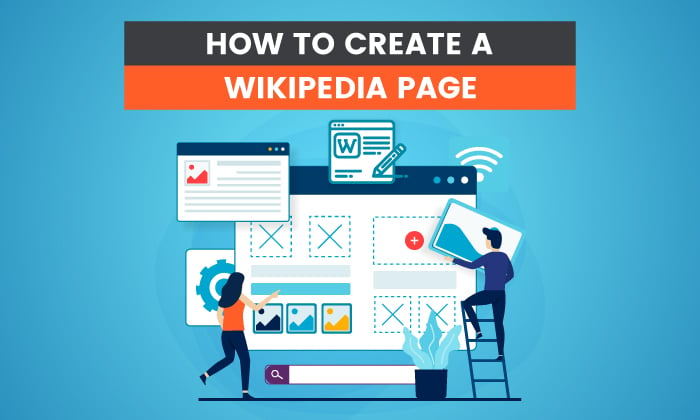12 Steps to Create a Responsive Website
Are you ready to take your website to the next level? Imagine having a beautiful online presence that captivates your audience, regardless of the device they’re using. In today’s mobile-dominated world, having a responsive website is a necessity, not...

Are you ready to take your website to the next level? Imagine having a beautiful online presence that captivates your audience, regardless of the device they’re using. In today’s mobile-dominated world, having a responsive website is a necessity, not a choice. Did you know that mobile devices clocked over 50% of global website traffic in 2021? It’s a fact that cannot be ignored. So, if you’re thinking about how to create a website that seamlessly adapts to different screen sizes and engages your visitors, you’re in the right place. In this article, we’ll walk you through 12 steps to create a responsive website that will leave a lasting impression. So, let’s dive in and transform your online presence into something truly remarkable!
1. Define and Plan Your Goals
Before diving into the technical aspects, it’s essential to plan and define your goals for the website. Consider your target audience, their needs, and the purpose of your site. This will help you make a decision that is data-driven throughout the development process. Below are the steps by which you can define and plan your strategy in line with your goals.
Identify your target audience.Define the purpose of your website.Conduct competitor researchDetermine key performance indicators (KPIs)Sketch a sitemap and wireframes.2. Choose a Responsive Framework or Templates
To kickstart your responsive web design, consider using a responsive framework or template. Frameworks like Bootstrap and Foundation provide a solid foundation with pre-built components and responsive grids. Templates, on the other hand, offer ready-to-use designs tailored to suit your needs. Below are some elements to look for in a good, responsive framework:
Responsive grid systemDevice compatibilityCustomizabilityComponent libraryDocumentation and community supportPerformance optimizationBrowser compatibility3. Execute Mobile-friendly Approach
With the majority of people on the internet browsing on mobile devices, it’s crucial to adopt a mobile-first approach. Start by designing for small screen sizes and gradually enhance the layout and functionality for larger devices. This ensures a seamless user experience across all screen sizes.
4. Fluid Grids
A fluid grid is a layout structure that uses proportional units instead of fixed pixels for defining column widths. In a fluid grid system, columns adjust their size based on the available screen width.
5. Flexible Images
Flexible images refer to images that scale proportionally to fit different screen sizes.
Benefits of Fluid Grids and Flexible Images:
Consistent User ExperienceImproved ResponsivenessTime and Cost Efficiency.Enhanced AccessibilitySEO Optimization6. Prioritize Content and Navigation
When designing a responsive website, prioritize 2 of the most important aspects, which are your content and navigation. Ensure that important information is readily accessible on smaller screens without the need for excessive scrolling. Consider the following factors to optimize for a better mobile experience:
Streamline your contentCondense navigation menusUse touch-friendly buttonsImplement intuitive gesturesOptimize forms for mobile.Test across devices7. Optimize Typography for Readability
Are you aware that Typography plays a vital role in user experience? Choose fonts that look good on all devices and sizes. Keep the font sizes large enough to be readable on mobile screens but not overwhelmingly on larger screens. Adjust line spacing and line lengths to enhance readability, and use appropriate heading hierarchy to structure your content to serve a better user experience to the visitors.
8. Use Media Queries for Device Adaptation
Media queries are CSS rules that allow you to apply different styles based on the user’s device characteristics, such as screen width or orientation. Use media queries to create breakpoints in your design and adjust the layout, typography, and other elements accordingly. This makes sure that your website looks and functions optimally across different devices.
9. Optimize Images and Media
Large images and media files can significantly impact website loading speed, especially on mobile devices. Optimize your images by:
Compress the images without sacrificing the quality.Consider using responsive image techniques like SRCSET and size attributes to serve appropriately sized images based on the device’s capabilities.10. Test and Debug Across Devices
To ensure a truly responsive experience, thoroughly test your website across various screen sizes. Use browser developer tools or online testing platforms to simulate different devices and identify any layout or functionality issues. Address any bugs or inconsistencies to deliver a seamless user experience.
Enhance User Interactions with Touch and Gestures
As mobile devices rely heavily on touch and gestures, optimize your website for these interactions. Follow the below steps to achieve the same:
Ensure the buttons and links are large enough to be tapped easily.
Implement swipe gestures for image carousels or interactive elements.
Pay attention to touch-friendly form inputs and consider virtual
keyboards for form submissions.
11. Fast Loading Times
Website performance is crucial for user engagement and search engine optimization. Regularly monitor your website’s loading times and identify areas for improvement. Below are the areas that you can work on to optimize for a better loading speed:
Compress and minify files:Enable browser caching: Use content delivery networks (CDNs):Optimize CSS and JavaScript deliveryReduce HTTP requestsOptimize server response time.Mobile-first optimizationPerformance monitoringContinuous optimization12. Keep Updating and Improving
Responsive Web Design Mississauga Is an ongoing process. Keep track of industry trends and technological advancements to continually update and improve your website. Regularly analyze user behaviour and feedback to identify areas that can be optimized for a better user experience. Stay up to date with the latest best practices and continue refining your design.
Final Words
Creating a responsive website is no longer an option; it’s a necessity in today’s digital landscape. By following these 12 steps, you can create a website that adapts seamlessly to different devices and provides an exceptional user experience. Remember to plan, prioritize content, optimize for mobile, test across devices, and continually improve your design. Embrace the responsive web design approach and unlock the potential of reaching your audience wherever they are.

 BigThink
BigThink 
































